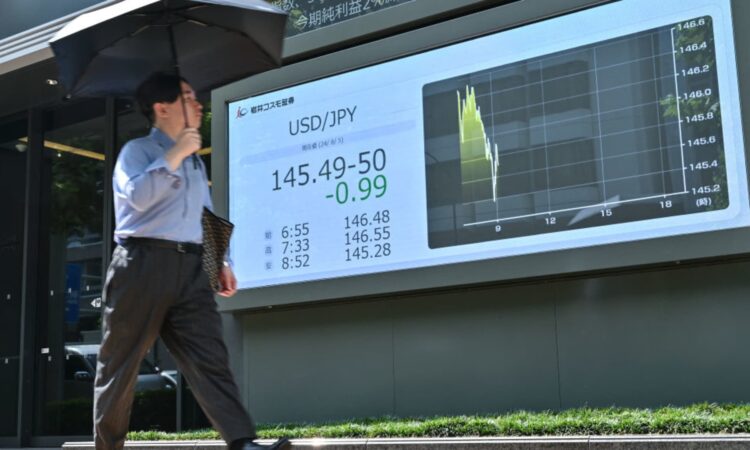A big complication for global markets

The Nikkei 225 recovered Tuesday, up 10.2%, following a drop of 12% on Monday. That drop, the worst drop for the Japanese stock market since 1987, was about much more than a slowdown in the U.S. economy and whether global stocks should have their multiples lowered. That might be worth a 2%-4% drop. Those losses were largely about the yen carry trade. In its simplest form, the yen carry trade has investors borrowing cheap yen to invest in higher yielding assets, often currencies. When there is a big differential in interest rates, like 4% in the U.S. versus nearly zero in Japan, the trade can seem like free money. But it can go bad very quickly if interest rates begin to change. A bigger issue is how opaque the whole business is. How big is the yen carry trade? For example, because there is not a central source to track currency trades, we have no idea how big the yen carry trade is. But it is big. The Wall Street Journal noted that Japanese banks’ foreign lending reached $1 trillion in March, a 21% rise from 2021. We have no idea where all the money goes. The common explanation is that some invest in currencies, some invest in equities. But we don’t know. We also don’t know who is using the carry trade. The typical answer is institutional investors or hedge funds. That’s certainly true, but we don’t have a breakdown. Finally, we have no idea how much leverage is being used. These are lots of unknowns, but I would wager that the Federal Reserve, and the Bank of Japan, were a bit shocked at a 12% drop in the Nikkei. How the yen carry trade works The heart of the problem is that Japanese central bankers have been talking about higher interest rates. The yen is rising, and that is making the yen carry trade less profitable. Here’s a simple example. “XYZ Hedge Fund” borrows 10 million yen, which up until recently was costing just a little above zero interest. It takes the proceeds and buys the U.S. dollar at 155 yen to the dollar, about where it was trading in July. The fund now has $64,516, where you can earn an interest rate north of 4%. It sounds like money for nothing. Things can go wrong because the fund still has borrowed 10 million yen and has to pay it back. If the value of the Japanese yen starts to strengthen, the fund has to repay that debt with more dollars. Remember that $64,516? If the yen goes from 155 to 145, which is where it traded Monday, it will take $68,965 to repay that 10 million yen (10 million yen divided by 145 = $68,965). All of a sudden, XYZ Hedge Fund has to cough up $4,449 of their own money to cover the debt ($68,965 – $64,516 = $4,449). And this is small potatoes. Some funds may have hundreds of millions of dollars in this trade. Leverage makes this even more complicated Much of this is being done on margin, where the hedge fund is borrowing money from a broker. If the value of the investment drops and the equity falls below the minimum established by the margin agreement, the broker may issue a margin call requiring the hedge fund to deposit more funds, or sell the securities. Deposit more funds means find more yen, or start selling. Given the 12% drop in the Nikkei on Monday, a lot of people were selling. The bottom line The price of financial assets are not just determined by valuation metrics like earnings and multiples. Flows — how much money is flowing into an asset class —is also an important determinant. The yen carry trade has created enormous cross-market flows. It is likely a significant driver of flows into the U.S. dollar and global equities, including the U.S. stock market. It is certainly not unreasonable to believe that a significant unwind of this trade, should it continue, would be an additional headwind to U.S. equities. It’s little wonder the always-astute Nicholas Colas at DataTrek noted that, “Until the yen stabilizes, it is hard to see how global equity market volatility declines.” One positive sign: the ETF to watch is the Invesco Japanese Yen ETF (FXY), which tracks the price of the Japanese yen, had volume six times normal yesterday. After rocketing up five days in a row, it’s down 0.6% on Tuesday on much lower volume.

